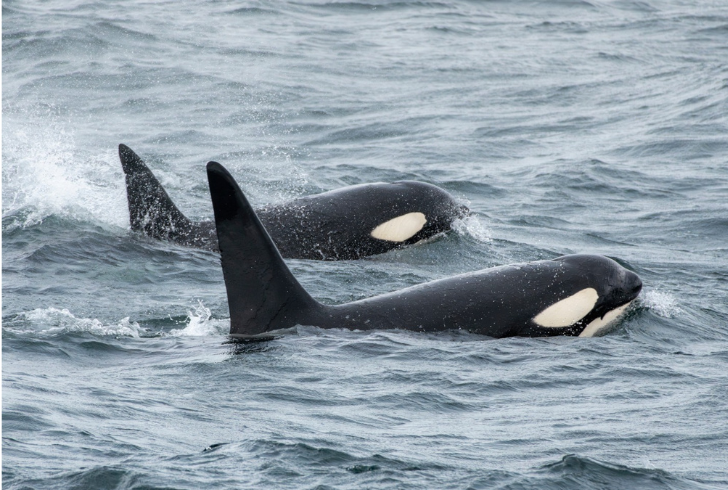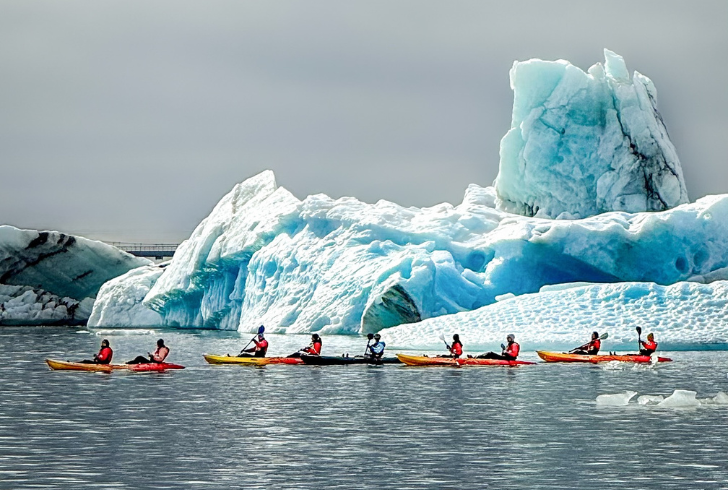Iceland has a rare way of capturing attention at first glance. Towering glaciers, roaring waterfalls, volcanic landscapes, and sweeping coastlines make it one of the most visually striking destinations in the world.
Beyond the scenery, it’s also a place where conversations about sustainability and ethical tourism are shaping how visitors experience the country. Choosing whale-safe tours, supporting plant-forward dining, and exploring responsibly are ways to enjoy Iceland while protecting its natural treasures.
Whale Watching With Care
September and October are among the best months to spot whales in Icelandic waters. With 23 different species appearing around the coast, visitors often encounter humpbacks, minke whales, orcas, and even blue whales. Whale watching contributes around $26 million annually to the local economy, making it an important part of tourism.
The Icelandic Whale Watching Association, known as IceWhale, works with operators who follow strict guidelines to ensure the safety and well-being of marine life. Selecting these tours supports practices that prioritize animal welfare and preserve the experience for generations to come.

Instagram | lakitours | The best time to spot whales in Iceland is in September and October.
Food Options for Conscious Travelers
Traveling through Iceland often means long stretches between towns, so knowing where to eat and shop matters. Reykjavík is home to several popular bakeries and cafés, and many now offer plant-based treats.
Brauð & Co. has built a reputation for its flaky pastries, with a vegan cinnamon roll that has become a favorite. In northern Iceland, Pylsuvagninn á Akureyri puts a creative spin on the country’s iconic hot dog, serving seven plant-based variations. For those preparing for road trips through remote regions, grocery chains like Krónan are a reliable place to pick up fresh produce and vegan staples before heading out.
Places That Define the Icelandic Experience
There’s more to Iceland than the postcard-perfect glaciers. Some regions not only showcase the country’s geological drama but also offer trails that reward hikers with unforgettable views.
1. Þingvellir National Park
Barely an hour’s drive from Reykjavík, Þingvellir is a UNESCO treasure where history meets geology. The adventurous often continue to the Glymur trail, threading through caves and streams before arriving at cliff edges that overlook sweeping valleys.
2. Snæfellsnes Peninsula
This peninsula, often described as “Iceland in miniature,” concentrates the country’s landscapes into one area—volcanic terrain, rugged coastlines, and dramatic gorges. Among its highlights is Kirkjufellsfoss, the twin waterfall flowing beneath the sharply rising Kirkjufell mountain, a scene that even Hollywood has borrowed for Game of Thrones.
3. Southern Coast

Instagram | lukekellytravels | The iceberg lagoon Jökulsárlón is located close to the colorful Múlagljúfur Canyon.
Home to black sand beaches, glacier lagoons, and canyon hikes, the southern region offers striking contrasts. The town of Vík is often a base for exploring nearby sights. Jökulsárlón, a lagoon filled with drifting icebergs, sits about 20 minutes from Múlagljúfur Canyon, where autumn colors create a stunning backdrop.
Shifting Attitudes on Whaling
While whale watching has grown in popularity, whaling itself remains a controversial issue in Iceland. The country is one of only three in the world—alongside Norway and Japan—where commercial whaling still takes place. However, public opinion is shifting.
In 2018, Gallup reported that 84% of Icelanders had never eaten whale meat, with just 2% saying they consumed it often. By 2023, the Maskina Institute found public opinion had shifted further—over half of respondents voiced opposition to whaling.
The change reflects a growing harmony between local sentiment and the expectations of international visitors, many of whom see whales as wildlife to protect, not food to consume.
Ethical Travel Moving Forward
Visiting Iceland responsibly means supporting its wild beauty instead of straining it. Travelers can help by joining whale-safe tours, seeking out plant-forward dining, and choosing excursions that respect landscapes and wildlife.
Such choices don’t lessen adventure—they safeguard it. They make it possible for future visitors to stand before thundering waterfalls, shimmering glaciers, and wild whales, knowing these wonders endure.




